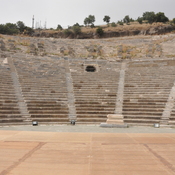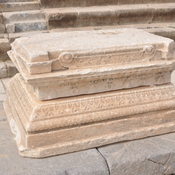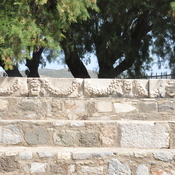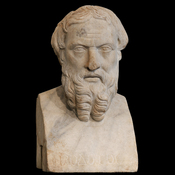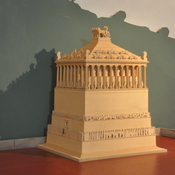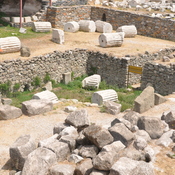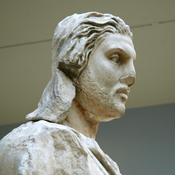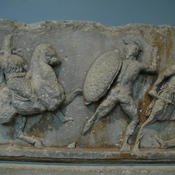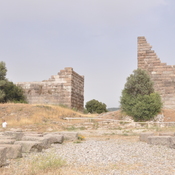Er zijn nog geen Nederlandstalige annotaties. Hier volgen annotaties in het Engels.
The battle of the Marsyas in 497-496 BC was the third of the three battles between the Persians and Carian rebels during the Ionian Revolt (499-493 BC) - wars between the Greeks and the Persian Empire. According to Herodotus it took place more or less directly after Labraunda, but it could occured early in 496, the next campaigning season 1
Herodotus: When they had been driven there, they deliberated how best to save themselves, whether it would be better for them to surrender to the Persians or to depart from Asia. While they took counsel, the Milesians and their allies came to their aid, whereupon the Carians put aside their former plans, and prepared to wage a new war over again. They met the Persian attack and suffered a heavier defeat in the battle than the first; many of their whole army fell, but the Milesians were hardest stricken. The Carians, however, rallied and fought again after this disaster, for learning that the Persians had set forth to march against their cities, they beset the road with an ambush at Pedasus. The Persians fell into this by night and perished, they and their generals, Daurises and Amorges and Sisimaces. With these fell also Myrsus, son of Gyges. The leader of this ambush was Heraclides of Mylasas, son of Ibanollis. This, then, is how these Persians perished .
Sources:
- 2, A. D. Godley. Cambridge. Harvard University Press. 1920.
- M. Mellink in: The Cambridge Ancient History, Volume X: The Fifth Century BC, 1982, p. 224
- Rickard, J (21 April 2015), Battle of Pedasus or Pedasa, 497 or 496 BC , http://www.historyofwar.org/articles/battles_pedasus.html
- https://en.wikipedia.org/wiki/Ionian_Revolt
Bronverwijzingen
- ↑Rickard, J (21 April 2015), Battle of Pedasus or Pedasa, 497 or 496 BC , http://www.historyofwar.org/articles/battles_pedasus.html
- ↑Herodotus, The Histories V.119-122
The battle of the Marsyas in 497-496 BC was the third of the three battles between the Persians and Carian rebels during the Ionian Revolt (499-493 BC) - wars between the Greeks and the Persian Empire. According to Herodotus it took place more or less directly after Labraunda, but it could occured early in 496, the next campaigning season 1
Herodotus: When they had been driven there, they deliberated how best to save themselves, whether it would be better for them to surrender to the Persians or to depart from Asia. While they took counsel, the Milesians and their allies came to their aid, whereupon the Carians put aside their former plans, and prepared to wage a new war over again. They met the Persian attack and suffered a heavier defeat in the battle than the first; many of their whole army fell, but the Milesians were hardest stricken. The Carians, however, rallied and fought again after this disaster, for learning that the Persians had set forth to march against their cities, they beset the road with an ambush at Pedasus. The Persians fell into this by night and perished, they and their generals, Daurises and Amorges and Sisimaces. With these fell also Myrsus, son of Gyges. The leader of this ambush was Heraclides of Mylasas, son of Ibanollis. This, then, is how these Persians perished .
Sources:
- 2, A. D. Godley. Cambridge. Harvard University Press. 1920.
- M. Mellink in: The Cambridge Ancient History, Volume X: The Fifth Century BC, 1982, p. 224
- Rickard, J (21 April 2015), Battle of Pedasus or Pedasa, 497 or 496 BC , http://www.historyofwar.org/articles/battles_pedasus.html
- https://en.wikipedia.org/wiki/Ionian_Revolt
Bronverwijzingen
- ↑Rickard, J (21 April 2015), Battle of Pedasus or Pedasa, 497 or 496 BC , http://www.historyofwar.org/articles/battles_pedasus.html
- ↑Herodotus, The Histories V.119-122




